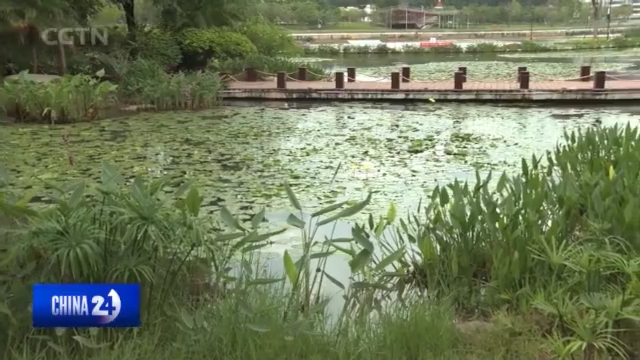Environmental Protection: Shenzhen's most polluted river has a stunning new lookThe Maozhou River is the largest river running from southeast to...
Published on by Water Network Research, Official research team of The Water Network

The Maozhou River is the largest river running from southeast to northwest in southern China's Shenzhen City. It has shifted from the most polluted river in Guangdong Province to an example of the remarkable improvements of the water environment in China over the past six years. CGTN's Xu Hua takes us to Shenzhen to see what's behind the change.
Shenzhen's Maozhou River has a stunning new look today. It's become one of scenic spots for the locals and tourists.
However, only locals remember what it used to look like and how it smelled.
With a length of around 40 kilometers, it used to be one of the most polluted rivers in the city, due to severe industrial pollution and sewage following urban expansion over the past 30 years.
HONG YONGLIN Local Resident "It stinks. Nearby residents could smell it from one or two miles away."
HONG WEIJIANG Party Secretary, Hongqiaotou Community, Shenzhen "The rent here was very low, we used to have problems in renting out our land."
HUANG HAITAO Deputy Head, Water Authority of Shenzhen Municipality "Since the 1990s, the Maozhou river basin has witnessed explosive economic and population growth, with about 50,000 industrial enterprises and more than 4.5 million people living there. Due to the long-term lag of technical infrastructure, relatively weak environmental management, long-term overload discharge, 44 tributaries were black and smelly. "
President Xi has highlighted significance of ecological civilization since he took office as head of state in 2013.
He said "building an ecological civilization is vital to sustaining the Chinese nation's development." Since 2016, Shenzhen has spent billions in tackling pollution in the river.
HUANG HAITAO Deputy Head, Water Authority of Shenzhen Municipality "We worked step by step to channel rainwater from sewage, filled loopholes in pipeline network, and traced contamination source, improved the efficiency of sewage treatment, built an ecological circle along rivers and lakes, increased water infrastructure, eliminated black and smelly waters."
According to data from the Shenzhen Municipal Water Bureau, in a very short period, Shenzhen has built over 2,000 kilometers of new sewage pipe network in the basin.
Shenzhen's capacity of sewage treatment has reached 1.2 million tons per day, three times as many as before. This could be attributed to construction of sewage treatment plants, which reduced heavy burdens of nearby enterprises like Tsingtao Beer.
HOU WANBIAO Assistant to General Manager, Shenzhen Tsingtao Beer Asahi "After the new national standard of sewage discharge was issued in 2020, our wastewaters were directly discharged to the sewage treatment plant. Because the carbon sewage treatment plant needs to process and extract wastewaters from the beer factory. So it is a win-win situation for our factory and sewage treatment plant."
So far, all of industrial wastewater discharged into the Maozhou River meets the national standard.
Attached link
https://news.cgtn.com/news/2022-07-11/VHJhbnNjcmlwdDY2OTc1/index.htmlTaxonomy
- Habitat
- River Engineering
- River Restoration
- River Valley Project